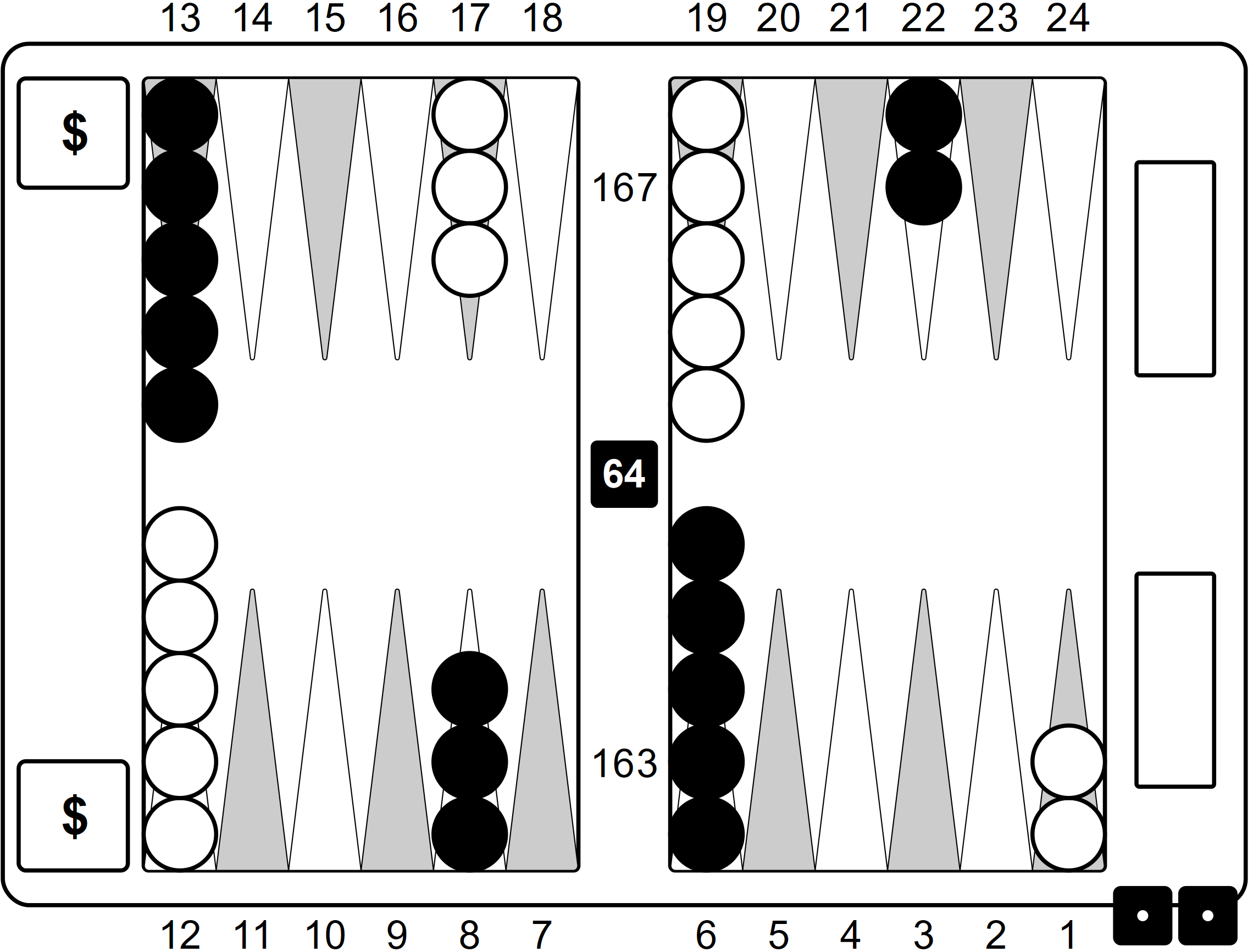Backgammon Efficiency
Hello fellow backgammon lovers! I'm Marc Olsen, and I'm excited to chat with you today about a really key idea in backgammon: efficiency. Think of this as us gathered around the board, sharing tips. So, let's get started!
What is Efficiency in Backgammon?
At its heart, efficiency in backgammon is about getting the most out of what you have. 1 And what do we have? Our 15 trusty checkers! Since we only have this limited number to work with, it's crucial to make every move count and maximize the impact of each checker.
Seeing Efficiency in Action
Let me give you an example. Say I'm playing White, and I make a move to build a prime like this:
Checkers doing something productive by creating prime value!
This is a perfect example of an efficient play. Notice how ten of my checkers are working together to create a strong 5-prime. That's efficiency in action – a smart and effective use of my checkers to build a solid defensive and potentially offensive wall. It’s about making your checkers work together harmoniously!
Now, flip the coin – imagine those same 10 checkers placed in a stacked manner.
Inefficient: checkers are not doing anything productive!
This would be a highly inefficient use of ten checkers, yielding only two points while leaving many spare checkers unused. Furthermore, extending this prime requires perfect rolls due to the concentration of checkers on just two points, making it very inflexible.
Essential Lessons
Efficiency in backgammon is the antithesis of stacks and gaps. Instead, aim to develop strategies with elegance and precision, similar to the strong prime structure we discussed previously.
Another crucial lesson is to position your checkers where they can be most effective. For instance, consider holding an anchor on your opponent's three-point with a pair of checkers.
Take these two checkers on the six-point, for instance. An efficient use of these two checkers would be to make this point:
Efficient.
or to make this point:
Efficient.
An inefficient use of these two checkers would be to have them behind your anchor because now they're not blocking anything anymore.
Inefficient.
Avoiding the "Buried Checker" Pitfall
If you take the third checker in the six-point, the worst thing that could happen to it would be to bury it down on the ace point.
Inefficient use of a spare checker
Now I have effectively killed this checker; it makes absolutely no use. We call this a "buried checker" – that must be avoided at all costs. Keep your spare checkers in front of the points you want to make.
For instance, if you roll a 4, a bad way of playing that 4 would be to take the spare checker on my eight-point and put it over here, on my 4-point.
A semi-buried checker
Why? Because you're placing a checker beyond the two points you intend to make. This creates a semi-buried checker – not entirely useless, as it can still move to the two-point or the one-point, but less effective than it could be.
Since movement in backgammon is forward, this spare checker would be better positioned on the eight-point, where it actively contributes as a builder towards the seven-point or the five-point.
An efficient way to play a four in the scenario might be to move a back checker forward by four points, like this:
Efficient use of a spare checker
It would also be flexible to move the four down from the midpoint, but it would leave it in direct shot contact with Whites anchor and not worth the risk.
The Final Play
In a nutshell, efficiency is your secret weapon in the backgammon arena. Put your checkers to work where they matter the most, avoid cluttering and gaps, and build a solid, powerful structure.
As the saying goes, "Put your checkers where they belong." This wise advice, attributed to Paul Magriel, speaks volumes. So, steer clear of burying your checkers – let them play their part and contribute to your backgammon masterpiece.
So, there you have it, my fellow enthusiasts – a thorough exploration into the core of backgammon efficiency. Armed with these insights, you're better equipped to tackle your matches with finesse. So, what are you waiting for? Apply these principles and strategies to your gameplay, and let the games begin!









